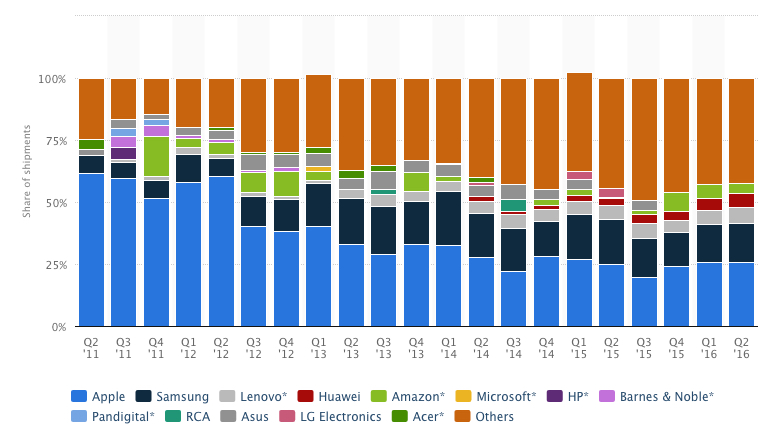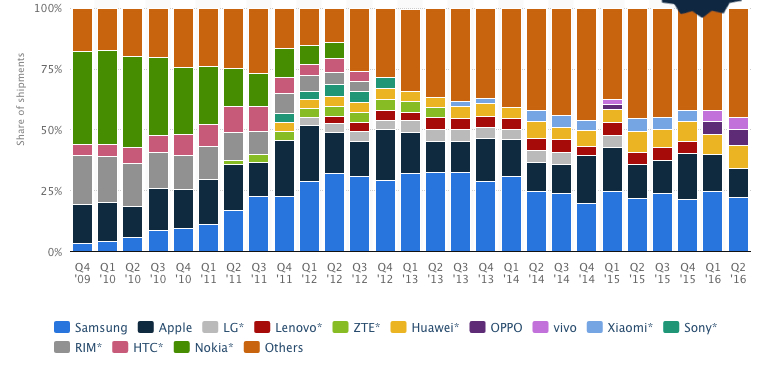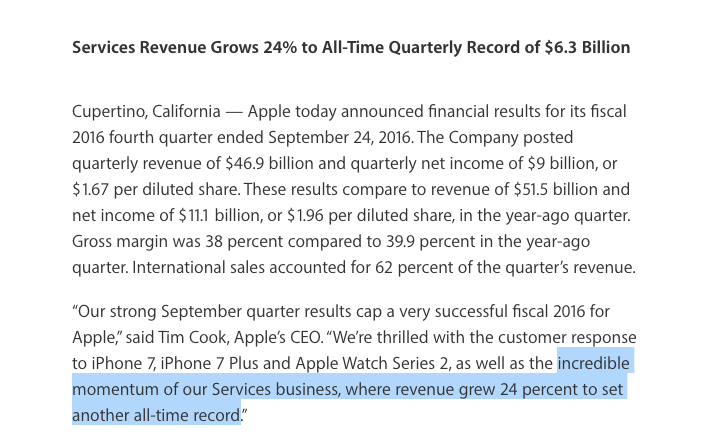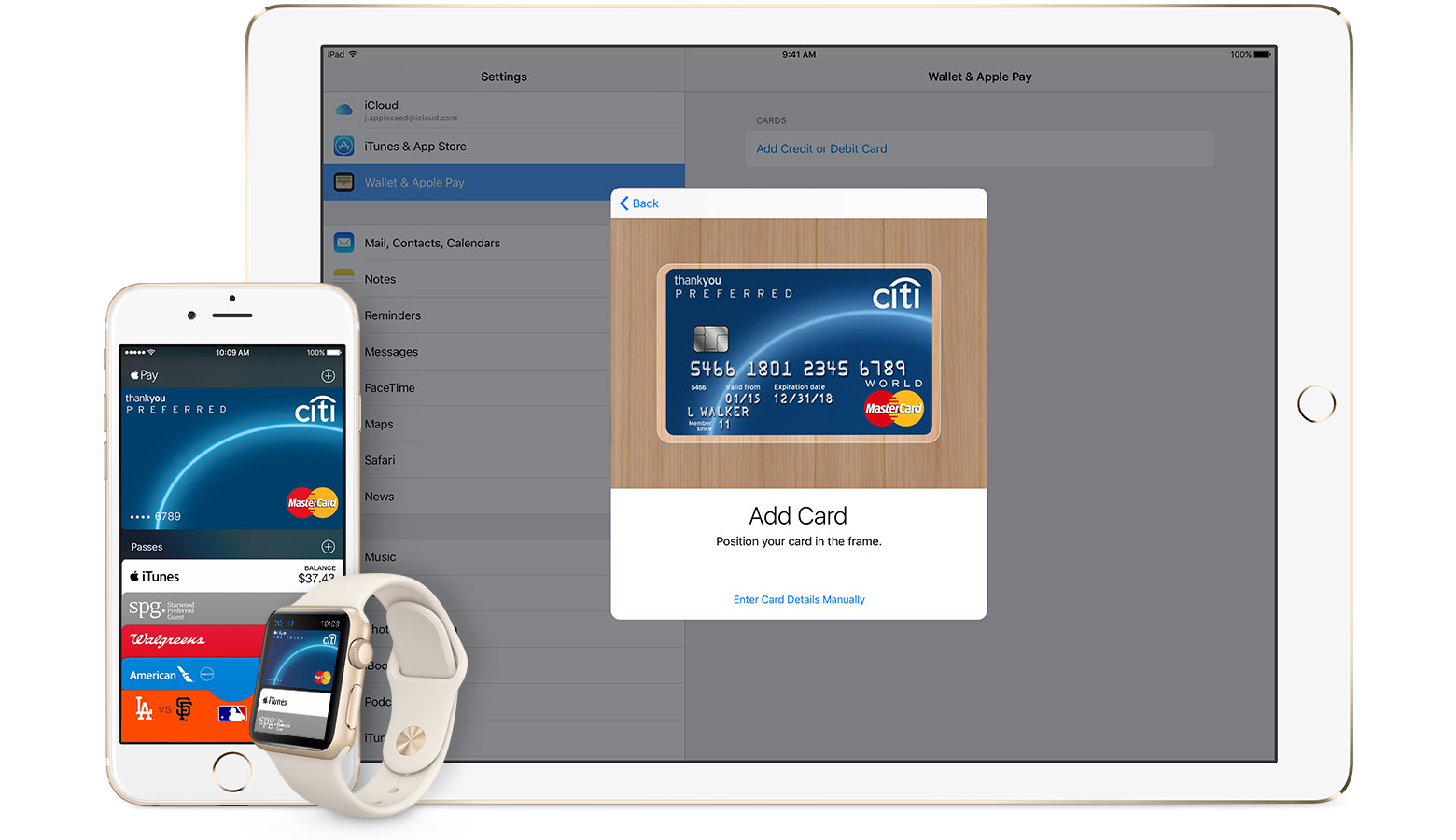Despite lackluster sales of the iPad this past quarter, Apple’s iPad still holds the lead as the world’s number one selling tablet. During the last reported quarter (Q4) of 2016, Apple only sold 9,267,000 units, compared to 9,950,000 units in Q3 2016. For the prior period (Q4 2015) iPad sales came in at 9,883,000 units.
As such, that’s a sequential dip of 7% over the previous quarter and a 6% dip over the same quarter last year. But despite the bad news, Apple still retains the Numero Uno position in tablet sales around the world. Samsung, as usual, came in at second place, but they were hit badly during the third quarter because of the major Note 7 issue.
Here’s a look at tablet sales around the world from Q2 2011 until Q2 2016, for the sake of comparison:

As you can see, Apple’s iPad has enjoyed the top spot for several years, but it’s also clear that Samsung has been closing the gap between first and second place for several quarters. Current data shows that Apple now holds a 22% market share, with Samsung trailing at 15%. Though that still seems like a big gap to fill, Samsung has been eating away at the mid and low-level price range for several years.
Smartphones are a Different Beast – Apple Lags behind Samsung in This Segment
Despite Apple’s premium branding, it has managed to hold its own on the tablet front. The story isn’t the same with smartphones, however, where the roles are reversed between Apple and Samsung.

As you can see, in the smartphone market Samsung is still king, while Apple has been in second place for a long time. Of note is the fact that Samsung was affected by the proliferation of smartphone manufacturers over the past few years, especially Chinese smartphone makers like Xiaomi and Huawei.
Being in the premium segment, Apple is relatively insulated from low-end and mid-range competitors, but the company realizes that it can no longer afford to depend on device sales for its long-term future.
Why Apple Needs Services like Apple Pay
We’ve been talking about Apple’s shifting focus towards the Services segment for a long time now. And that’s been validated by the company itself, which highlighted growth in this segment as the most important aspect of its Q4 earnings.

As you can see, Apple is keen on developing its Services segment, and their efforts are bearing fruit. Of course, they have a very long way to go before Services revenues can actually equal device sales, but they’ve made a good start.
The reason Services is such a critical segment for Apple is obvious – smartphone sales are declining around the world, and Apple currently makes 60% of its revenue from iPhone sales alone. Throw in iPads and Macs, and what you’re seeing is a company that makes more than 80% of its revenue selling devices.
Unfortunately, that’s a three-legged stool with one fat leg and two skinny ones. With Services being the fourth leg, Apple hopes that their revenue distribution will be more even over time.
Apple, Inc. lists “Internet Services, AppleCare, Apple Pay, licensing and other services” under the Services segment, but Apple Pay is where the company’s money really is for the future. That’s why it’s alarming to note that Apple Pay isn’t growing at the pace the company would like it to. But new developments in Japan, where Apple Pay can now be used for transit payments on subway trains, should help Apple Pay pick up the pace over the next few quarters.
Read Also: How to Use Apple Pay, and Some Fascinating Apple Pay Usage Statistics
The company is pushing hard to encourage user adoption of Apple Pay, but something just isn’t “clicking” the way its devices clicked in multiple markets soon after they were introduced.
But it’s still early days yet, and disrupting an industry where people are already comfortable with the convenience of credit and debit cards isn’t going to be easy. Until then, Apple must necessarily depend on device sales to carry it through for the next several years.
And that’s why it’s imperative that Apple keep launching new devices year after year. It’s the only way they can sustain their revenues long enough for other segments like Services to catch up to a device-heavy revenue portfolio.
Thanks for reading our work! Please bookmark 1redDrop.com to keep tabs on the hottest, most happening tech and business news from around the world. On Apple News, please favorite the 1redDrop channel to get us in your news feed.



